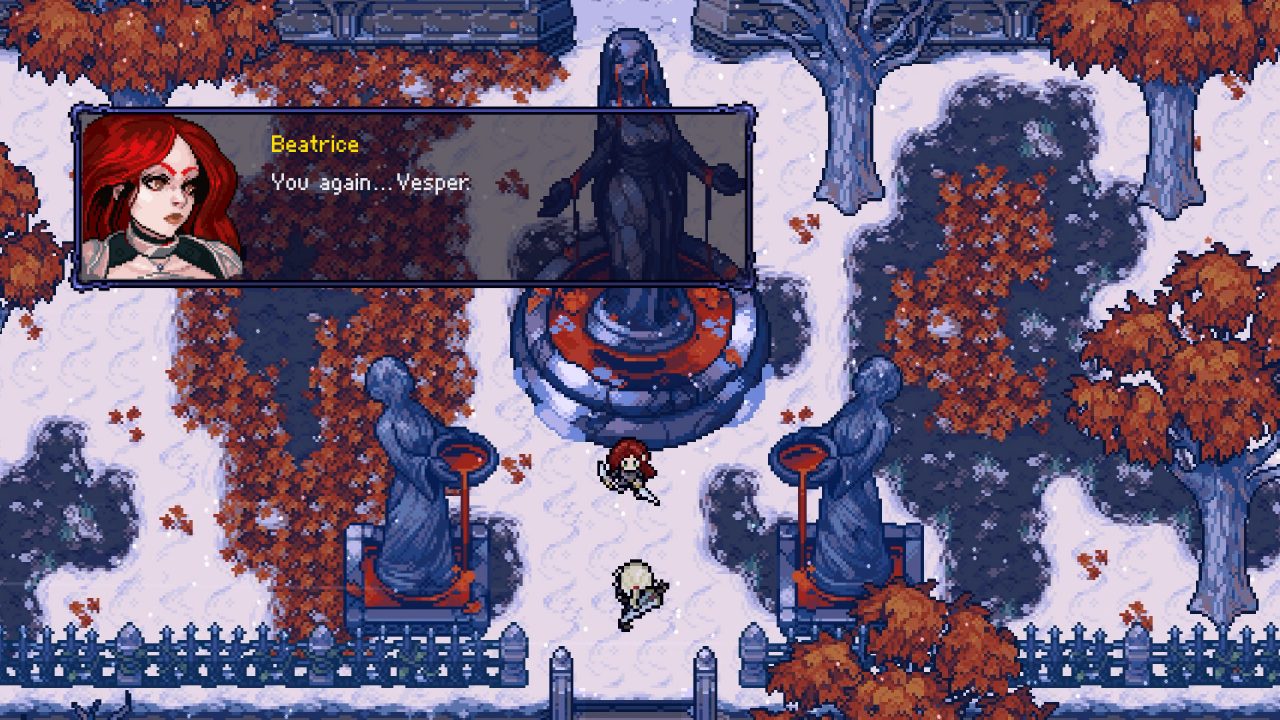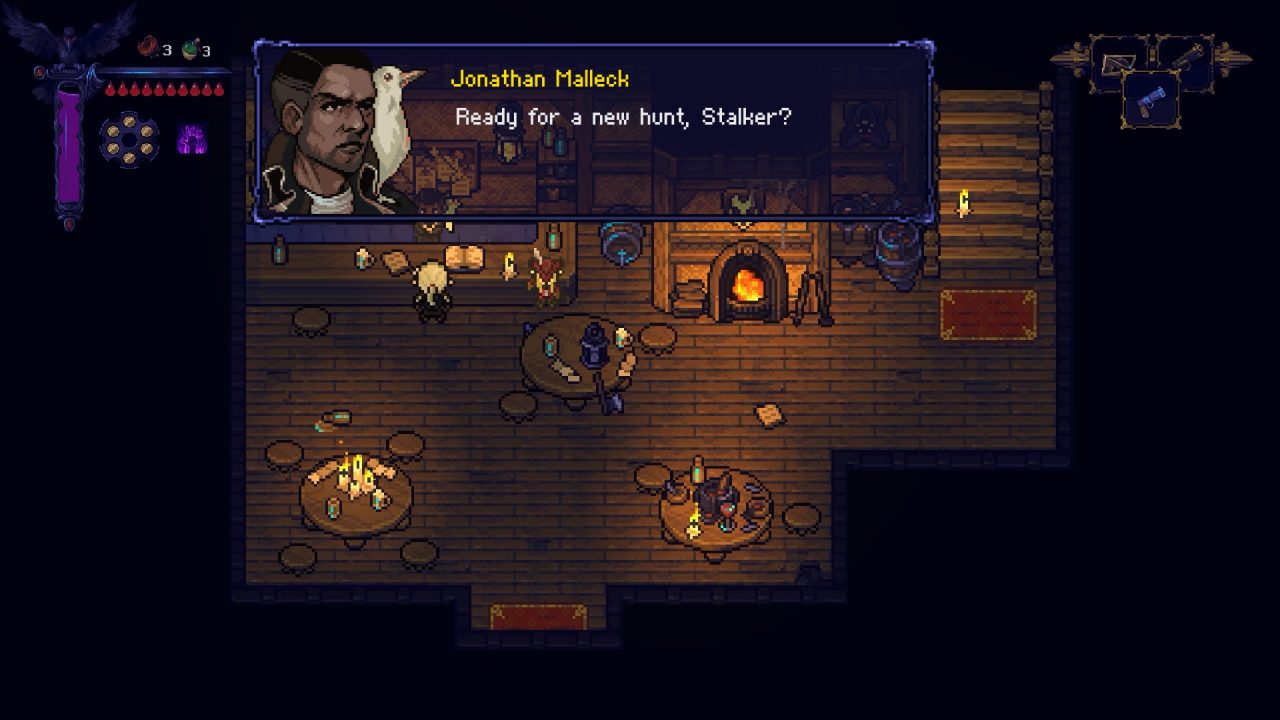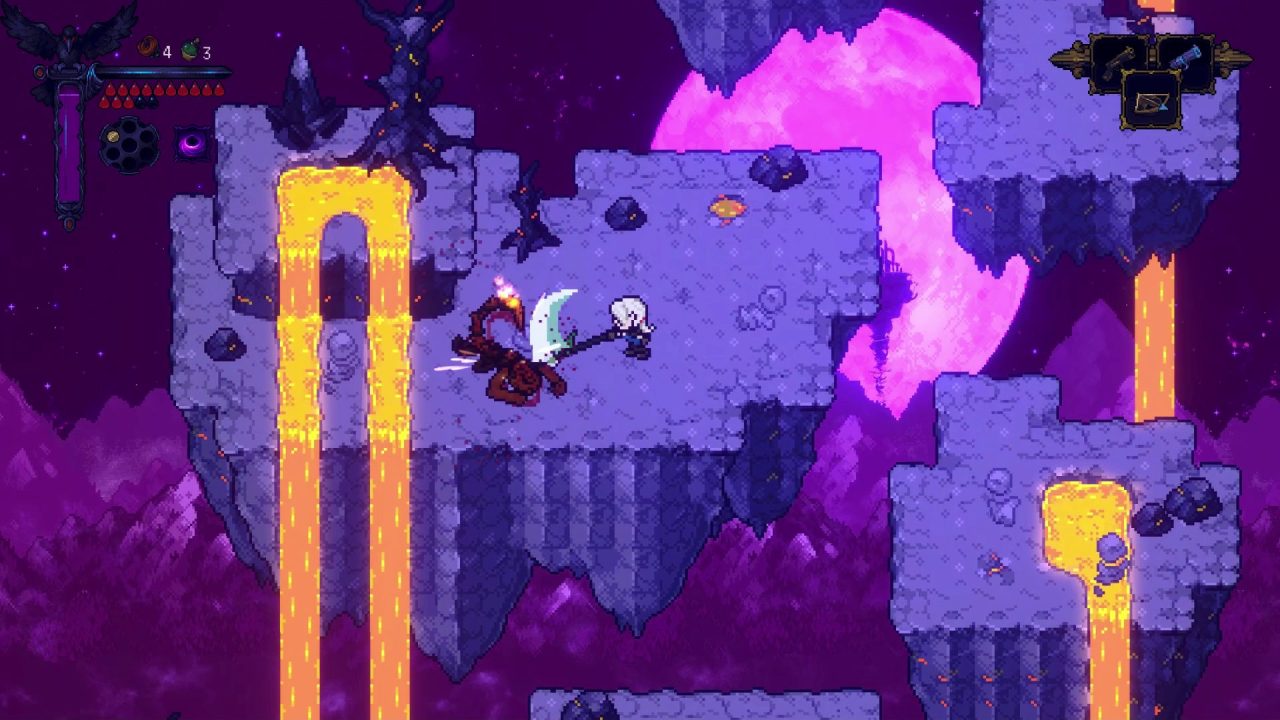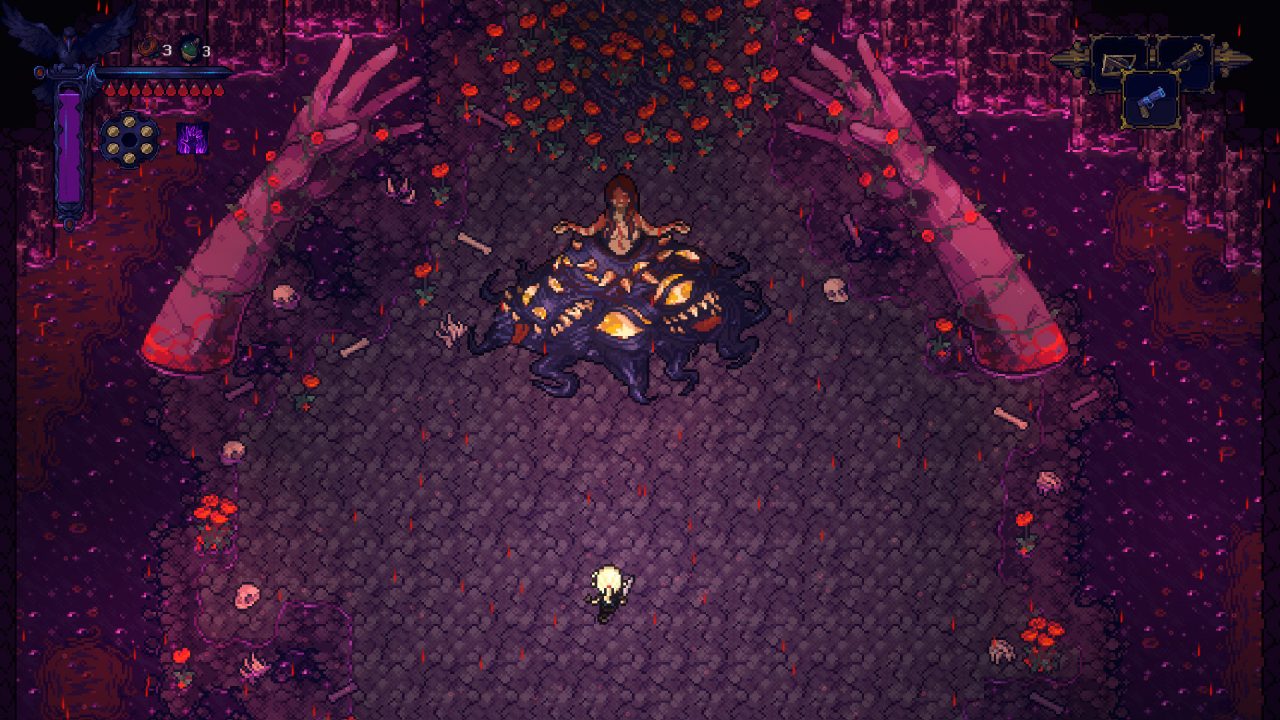It’s common for smaller indie games to wear their inspirations on their sleeves. Load up the Steam Store, and you will find countless games influenced by gaming classics from the NES and SNES eras. What is much rarer is an indie developer emulating the scale and sophistication of an acclaimed triple-A title and adapting that concept to their own limitations. Imagine that instead of iterating on early Zelda or Castlevania games, indie developers instead set their sights on FromSoftware’s Bloodborne. That’s exactly what developer Moonlight Games has done with Hunt the Night, creating a 2D action RPG infused with horror ambiance, challenging combat, and varied boss encounters.
Despite apparent inspirations from other works, Moonlight Games clearly put a lot of effort into establishing Hunt the Night‘s lore and setting. Everything in Medhram revolves around the cycle between Day, a period of prosperity where humans flourish, and Night, when darkness is cast over the land that can last for years, bringing with it hordes of monsters to terrorize humanity. The Stalkers were formed to defend humanity against these monstrous hordes, harnessing the dark powers of the Night to fight back. At some point, the Stalkers discovered an ancient artifact called the Seal which allowed them to permanently seal away the Night and grant humanity perpetual Day, so long as the seal was powered periodically through sacrificing Stalkers. One stalker, named Blackbone, betrayed the Stalkers and shattered the seal, ushering in a new era of Night.

The game begins during this period of Night, in which the Stalkers’ numbers are dwindling and most of humanity has fallen. The protagonist, Vesper, is tasked with gathering the various pieces of the seal due to her unique relationship with the powers of the Night. Vesper and her origin are central to the game’s plot, and the process of unraveling her past and how it connects to the world and the other Stalkers remains engaging throughout the journey. Vesper is inhabited by a being of the Night known as Umbra. Although Vesper is mute and unable to physically communicate with the other Stalkers you meet throughout her journey, she communicates with Umbra in her mind, and these conversations go a long way to flesh out her character and relationship to the world.
Hunt the Night’s greatest strength lies in its presentation; much like many other indie RPGs, Medhram is presented with 16-bit-style sprites and animation. What sets it apart is the implementation of modern lighting effects coupled with impressive sprite art and detailed animation. It’s rare to see games with an otherwise retro aesthetic have lighting that feels realistic, but Hunt the Night manages to create believable light and shadows. While working your way through dark corridors, light from a full moon will stream in through stained-glass windows while flickering candles and roaring fireplaces cast shadows across creaking wooden floors. The lighting elements are also deftly incorporated into the game design.
There is an enemy type that is nearly invisible and can only be seen by the faint shadows they cast as they approach Vesper. In dark locations, the player cannot see these shadows and must activate a light source to reveal the enemy locations. An early boss will fill the boss arena with a dark fog, obscuring the player’s vision and leaving his glowing red eyes the only indicator of an impending attack. Light and darkness are the basis of the game’s mythology and world-building, so seeing these elements incorporated seamlessly into both visual design and gameplay mechanics is quite impressive.

Hunt the Night continues to be a treat for the eyes, as the game sees you travelling to a wide variety of horror-influenced locations. An early objective sends you to a grimy, dilapidated asylum filled with corrupted victims of the night, then to an otherworldly dimension divided by flowing rivers of lava suspended in the vast expanse of space. The final area sees Vesper trudge through a snowy mountaintop dotted with autumnal trees, shrouded by an imposing vampiric castle. There is always a new source of visual splendor to appreciate. Further selling the grim atmosphere are small bits of environmental storytelling. Dungeons are filled with corpses of Stalkers strewn about, and the game foreshadows boss encounters by giving the player short glimpses of the boss moving through the environment (sometimes even as a jump scare). While I wouldn’t call Hunt the Night a horror game, the elements it borrows from the genre help form a cohesive visual identity that ties together the disparate locales across Vesper’s journey.
Unfortunately, the quality of the gameplay doesn’t match the game’s visual splendor. The action centers around fast-paced melee combat, with some ranged options thrown into the mix. Vesper has three guns (pistol, crossbow, and shotgun) and only six rounds of ammunition that each weapon draws from. The game rewards an aggressive playstyle by replenishing ammunition every few hits on an enemy, yet Vesper is frail and enemies hit hard. The primary defensive tool the player has is a dash, which gives Vesper invincibility frames while in motion. This combination of factors necessitates hit-and-run tactics, where you dash into melee range for a few strikes before enemies attack, then dash back out of danger and use the more powerful ranged attacks until you run out of ammunition, rinse and repeat.

Where this falls apart is in the reliability of the player’s move set and the composition of enemy groups. Most encounters out in the overworld feature plenty of space for Vesper to move around or escape combat if things become dicey. In dungeons, however, the game has a habit of locking you into small arenas filled with bottomless pits and other hazards (such as fire or poison) with large numbers of enemies who use projectile attacks. Since the dash ability only gives you invincibility frames while you are moving, this leaves you vulnerable at the beginning and end of a dash.
As enemies begin to projectile spam in a cramped environment, this creates scenarios which feel less like tight action RPG combat and more like a bullet hell. Weaving in and out of enemy projectiles can be satisfying often results in running right into a bottomless pit or patch of lava. On the flip side, attempting to avoid these hazards will put you into the path of enemy projectiles. Worse still is when your attacks don’t connect with enemy hitboxes correctly, or when respawning from falling into a pit, you are locked in place and take hits you can’t avoid. Most of these combat encounters are an exercise in frustration, and the game leans particularly hard on them in the latter half.

Luckily the boss fights are a highlight amidst the otherwise lackluster combat. Boss move sets complement Vesper’s abilities; each one incorporates unique mechanics and puzzle elements that are satisfying to master. The combat truly shines against a single large foe, with plenty of space to maneuver and consideration given to the player’s limitations, avoiding most of the issues in locked room encounters. It’s obvious that the boss fights received the most playtesting and polish; it’s just a shame that the more common combat scenarios pale in comparison.
Hunt the Night is a beautiful game that crafts a haunting atmosphere and an engrossing world. Despite some uneven design, the desire to unravel Medhram’s mysteries and see the next inventive boss fight kept me engaged until the end of the 15-hour adventure. If you can stomach the frustrating combat elements, there is a lot to enjoy in Vesper’s quest.


